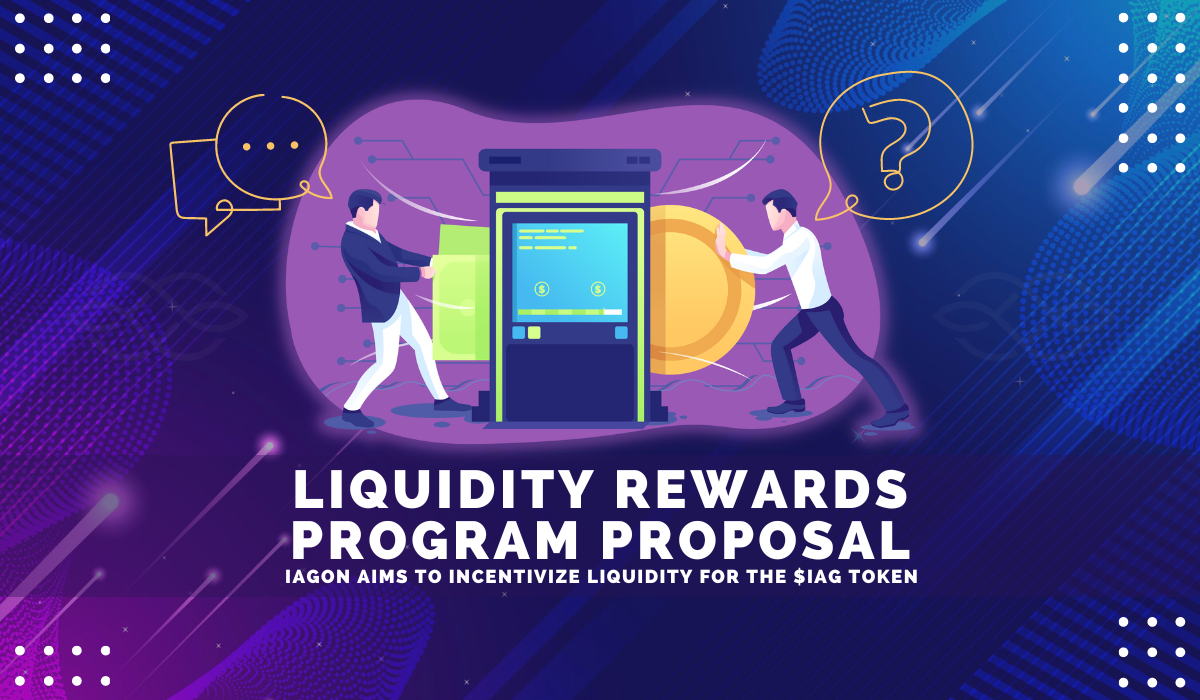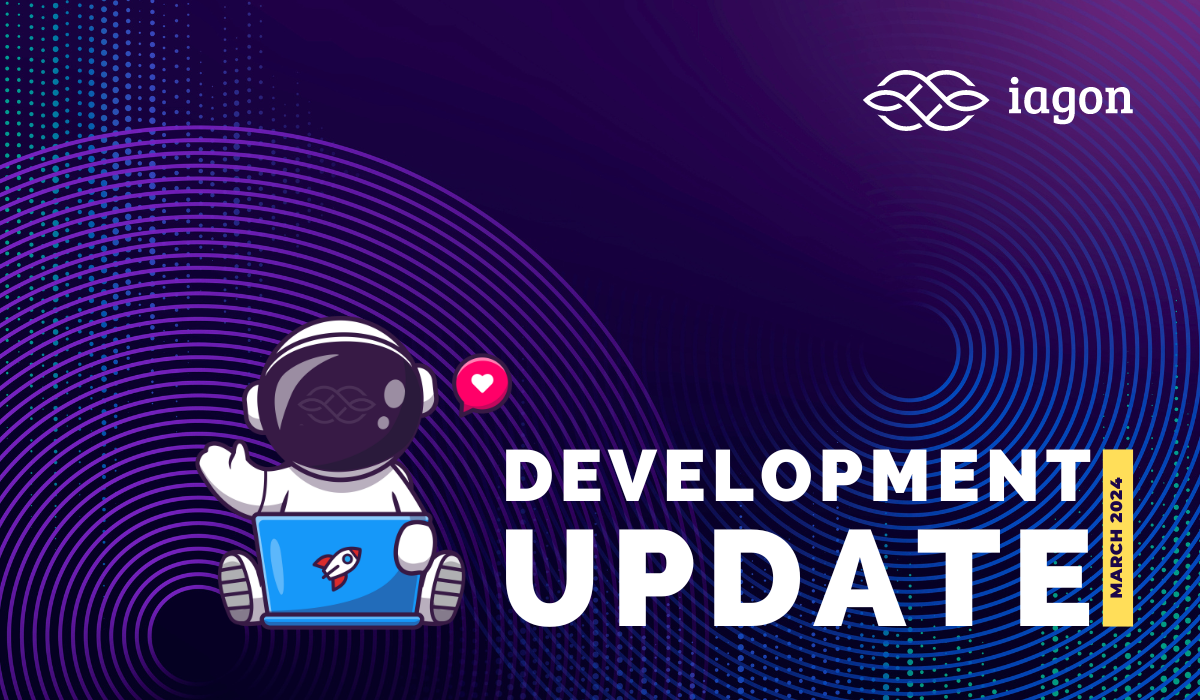Today we’d like to announce that Iagon is planning to launch a unique Liquidity Rewards Program designed to reward token holders who provide liquidity on Cardano DEXs we will be listed on. Details will be announced later, so stay tuned.
Our goal is to provide competitive reward mechanisms for the foreseeable future. Hopefully, this will attract loyal LPs (Liquidity Providers) as we continue to further decentralize, develop, and expand our ecosystem. Let’s not forget such initiatives play a role in the adoption of the Cardano blockchain, too.
Iagon team is working on the Liquidity Rewards Program mechanism. It’s still in development, and this is where you, our valued community, step in.
Community feedback is extremely important to Iagon, so we’re counting on your thoughts. We want to encourage all of you and especially 'geeks' (quantitative finance & mathematical modeling geniuses) to give us feedback.
Once the input is analyzed, the proposal will be announced in its final form. We predict this should happen next week.
What are liquidity rewards?
Liquidity pools have a substantial presence in the decentralized finance (DeFi) ecosystem. They are reserves of cryptocurrencies that are locked in smart contracts and used for crypto exchanges. A liquidity pool consists of two tokens, which is why it is sometimes referred to as a "pair".
Developers responsible for liquidity pools implement smart contract-based designs. This enables the pools to operate as decentralized exchanges relying on the automated market maker (AMM) model. Unlike on the traditional, order-book exchanges, on AMM-based DEXes, users trade crypto through smart contracts rather than with other users. The rates at which currencies are traded are based on mathematical formulas.
LPs are assigned shares in the pool in proportion to the volume of their deposit. Whenever a swap occurs in the pool, a transaction fee is charged and distributed among the LPs, in accordance with their share of total liquidity.
What makes our Liquidity Rewards Program stand out?
Iagon team is working on a Liquidity Rewards Program that will incentivize the community to increase the IAG/ADA liquidity.
Our program will have additional Loyalty Bonuses for LPs who provide liquidity and delegate their tokens to our ISPO pool - IAG1 at the same time.
The rewards will be distributed periodically, although the team is still working out the details. More info on the rewards distribution will be shared next week.
What’s worth noting:
- the Liquidity Rewards Program will run until rewards are exhausted;
- the date of the program’s launch will be announced next week;
- Iagon will allocate between 0.5% and 3% of the total token supply for this program (this means from 5 to 30 million IAG tokens);
- anyone can participate in our Liquidity Rewards Program.
How could the rewards for LPs be calculated?
We’re working on a reward computation function that would meet the following requirements:
- promoting longer locking periods;
- promoting higher locking volumes;
- allowing unlocking at any time (not necessarily continuous, perhaps once per epoch);
- providing an increase in terms of reward value (calculated in USD)
- monitoring the amount of tokens given out as rewards globally (the closer we get to the 0.5-3% limit, the slower the reward increase rate);
- Providing an additional boost for people delegating tokens as part of the ISPO.
The first two requirements suggest that the reward function should be superlinear in time and volume (if it was linear, there would be no difference between locking for many shorter periods and one longer period; the same can be said aboud locked amounts). If we consider the way continuous compounding of interest is handled, we could suggest an exponential relation i.e.:
where:
- A0 is the amound of locked tokens,
- t0 is the moment in time the tokens were locked,
- t is the moment of unlocking,
- Vt is the token value (e.g. in USD) at the moment of unlocking
(we divide by it to make the growth exponential in terms of value, not token amount), - α is the degree of influence of the initial amount (suggested to be slightly superlinear, e.g. around 1.2m but this needs to be determined),
- β is the growth coefficient (to be determined as well).
Now, formula (1) is reasonable if the overall amount of tokens given out as rewards is far below the upper limit. When it begins to approach that point, we will need to start damping the exponential growth. The idea is to multiply the exponential component by another function that starts at 1 but tends to 0 as we reach the limit. One idea for such a function is:
where:
- Nr is the total amount of tokens given out as rewards so far,
- Nmax is the maximum allowed amount of tokens provided for rewards (i.e. 0.5-3% of the total token supply at the moment),
- γ is the damping coefficient (higher values of γ will make this component stick close to 1for longer, at the price of a steeper increase as we come near to the limit; lower values would make the initial drop more drastic).
Finally, we need another multiplicative term that reflects a person's participation in the ISPO. For someone not participating, this term should just be 1 and have no bearing on the overall reward. In the case of participants, it makes sense to consider their relative contribution (percentage).
Two open questions (reflected by two additional parameters) are:
- What is the maximum reward boost for a hypothetical case of a sole participant?
- How should the increment due to ISPO participation grow with a growing percentage? Should it be linear, sublinear, superlinear?
This leads us to the following candidate function:
where:
- Pd is the fraction of a person's delegated tokens compared to the total volume (a real number between 0 and 1),
- ε is the coefficient determining how the ISPO increment depends on Pd (an ε of 1 would mean a linear relationship, higher values would favor high percentages disproportionately, and lower values would favor moderate participation),
- δ is a coefficient limiting the maximum reward boost due to participation in the ISPO (if δ is small, a hypothetical sole ISPO participant would see a drastic increase in their reward; if it's large, the ISPO effect on the overall reward is negligible; δ ≈ 2 translates to a boost by a factor of 1.5 in the extreme case).
The final reward function is the product of (1), (2), and (3):
Your time to shine
Right, this is our take on this, but the topic is open for discussion. We want the program to engage LPs and reward them for believing in Iagon. What do you, our valued community, think of this mechanism? Can it be improved in any way?
Your contribution will be highly appreciated, so do not hesitate to share your thoughts with us directly on telegram or by email. Let’s not forget we are making this happen for you and because of you!
For more information and other updates, please follow us on our social media , or head over to the IAGON Website!




